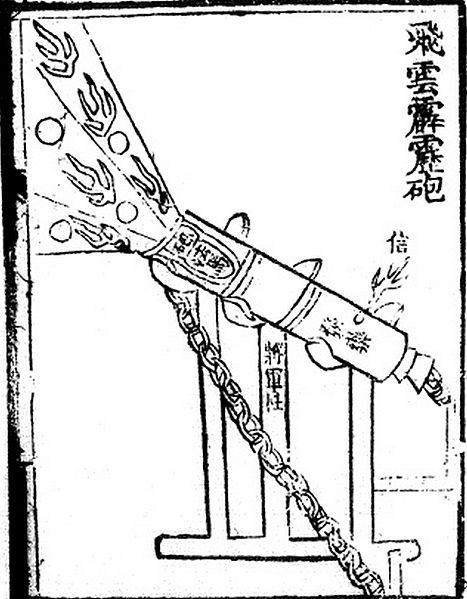Shrapnel shells were anti-personnel artillery munitions which carried many individual bullets close to a target area and then ejected them to allow them to continue along the shell's trajectory and strike targets individually. They relied almost entirely on the shell's velocity for their lethality. The munition has been obsolete since the end of World War I for anti-personnel use; high-explosive shells superseded it for that role. The functioning and principles behind Shrapnel shells are fundamentally different from high-explosive shell fragmentation. Shrapnel is named after Lieutenant-General Henry Shrapnel (1761–1842), a British artillery officer, whose experiments, initially conducted on his own time and at his own expense, culminated in the design and development of a new type of artillery shell.
Setting a time fuse (left) and loading a shell into a gun
This engraving shows a 12-pounder U.S. shrapnel shell c. 1865. It is fitted with a Borman fuze. In the cutaway view, the dark grey is the wall of the shell, the medium grey is sulphur resin, the light grey are the musket balls, and the black is the bursting charge.
Original Shrapnel design (left), and Boxer design of May 1852 which avoided premature explosions (right).
1870s cast-iron RML 16-pounder "Boxer" shrapnel shell showing limited space for bullets.
A shell, in a military context, is a projectile whose payload contains an explosive, incendiary, or other chemical filling. Originally it was called a bombshell, but "shell" has come to be unambiguous in a military context. A shell can hold a tracer.
Some sectioned shells from the First World War. From left to right: 90 mm shrapnel shell, 120 mm pig iron incendiary shell, 77/14 model – 75 mm high-explosive shell, model 16–75 mm shrapnel shell.
US scientists with a full-scale cut-away model of the W48 155 millimeter nuclear artillery shell, a very small tactical nuclear weapon with an explosive yield equivalent to 72 tons of TNT (0.072 kiloton). It could be fired from any standard 155 mm (6.1 inch) howitzer (e.g., the M114 or M198).
155 mm M107 projectiles. All have fuzes fitted.
The "flying-cloud thunderclap-eruptor" cannon from the Huolongjing








